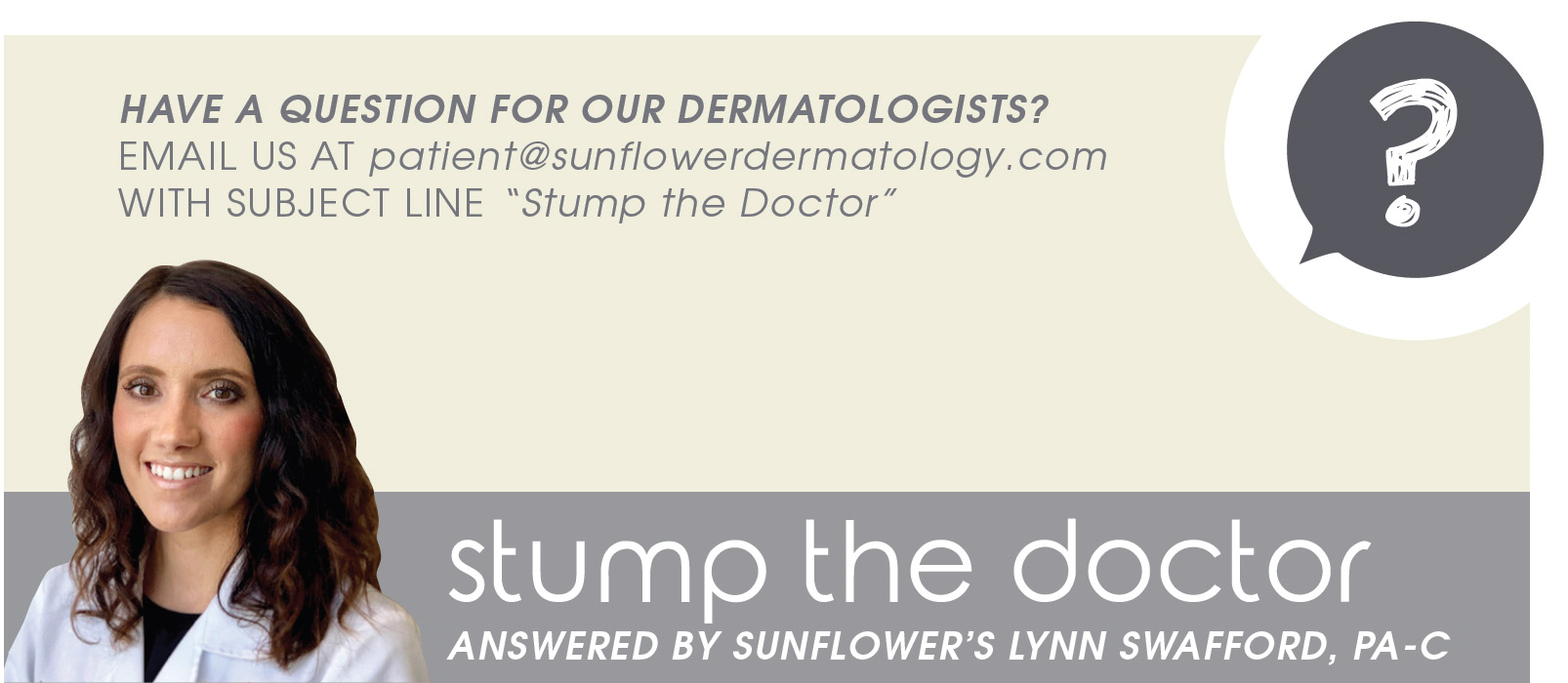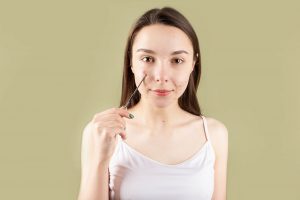
Are you wondering why your face is breaking out in the midst of a pandemic? It’s probably because of your mask. Doctors, dentists, construction workers and other professionals who are required to wear masks regularly are well aware of chin acne, or what has been lovingly called “Maskne.”
So while not wearing a mask is not an option in 2021, there are proven ways to prevent and treat maskne. Lynn Swafford, PA-C tackles one of our most asked questions: How do you treat maskne?
To help you bring your skin back to its 2019 glow, Lynn explains what acne is and how masks exacerbate the problem while offering four tried-and-true tips for getting rid of chin acne. Read on to learn more.
What causes acne?
First things first, let’s talk about acne in general. Acne is an uncomfortable and sometimes even painful skin condition that pops up when hair follicles are plugged with oil or dead skin cells.
This leads to things like:
- Whiteheads: Closed plugged pores
- Blackheads: Open plugged pores
- Papules: Small red, tender bumps
- Pimples: Papules with pus at the tip
- Nodules: Under-the-skin lumps that are usually painful and solid
- Cystic lesions: Pus-filled lumps under the skin
So when you wear a mask all day, these hair follicles are more likely to get plugged—either from the rubbing of your mask or because there’s no “air” for your skin to breathe. The longer you wear your mask and the tighter it is, the more likely you are to develop maskne.
Once we head into warmer months, you’ll likely see more breakouts on your chin as well, as humidity and heat can cause more chin and cheek acne.
How to prevent & treat Maskne
It’s no surprise that wearing a mask is bad for your skin, but because it’s good for your health and for the health of those around you, learning how to treat and get rid of maskne can help you feel more confident in your skin.
According to Lynn Swafford, PA-C, there are a few ways to prevent or treat chin acne. She frequently utilizes combinations of acne therapies to clear the skin including medications applied directly to the skin, prescription oral therapies (including antibiotics or hormone therapy), and procedures (light therapy, facials with extractions, or chemical peels).
While these might seem like more in-depth treatments, there are four tried-and-true ways for how to prevent mask acne: wash, moisturize, treat, repeat. Let’s dive into each of these four steps further:
1. Wash your mask (and your face!) to eliminate dirt and bacteria.
An acne-free face starts with good and consistent hygiene. That includes both your skin and your mask! Lynn offers these tips for washing both:
Face washing
Wash your face twice daily with a gentle, non-abrasive gentle acne cleanser, and always remove make-up prior to bedtime. Or, consider skipping the makeup behind the mask and let your products do their job without a distraction.
Mask washing
According to the CDC, you should wash your mask daily, either by hand or with your washing machine. Use a chemical-free detergent that will be soothing on your face.
2. Use a non-comedogenic moisturizer as a skin barrier of friction.
Choose skincare products and cosmetics labeled “non-comedogenic” or non-acne causing. Apply a non-comedogenic and fragrance-free moisturizer both morning and night. If you have trouble spots, like behind the ear or around the nose, you can also use a heavier cream, like something with zinc, as a heavy-duty barrier.
While some people think that too much moisture can lead to excess oils and increased pimples, the truth is that excessive drying of the skin can aggravate acne. Topical creams, treatments and sunscreen can add an extra layer between your skin and the mask to help calm your skin and face acne.
3. Finish with a gentle acne medication or product with salicylic or glycolic acid.
Take your routine one step further with a targeted treatment, like an acid or gentle acne medication, such as benzoyl peroxide. The two of the most common skincare ingredients are salicylic and glycolic acid:
- Glycolic acid is an AHA (alpha hydroxy acid.) AHAs is a water-soluble acid that exfoliates the skin by encouraging turnover of the cells. It is best for more dry skin because it encourages natural moisture to occur, but must be worn with sunscreen.
- Salicylic acid is a BHA or (beta hydroxy acid.) BHAs are oil-soluble and can penetrate deeper into your pores to exfoliate deeper into the skin. These are best for more acne-prone skin, although they should not be used if pregnant.
Adding one of these to your routine can help expedite the healing process. But, they can also be rough on your skin when used incorrectly. Contact our doctors to help find the right treatment option for your skin with hands-on recommendations and support.
4. Practice patience and consistency.
Lastly, always remember acne does not clear up overnight. Lynn Swafford, PA-C always emphasizes that it will take time to see improvement and she recognizes this can be incredibly frustrating.
Remain patient and compliant with your recommended regimen and you will see results. You can have clear skin and we want to help you achieve better skin for a better life.
And remember: Not wearing your mask is not an option, so if you need a more personalized approach to maskne treatment, we’re here to help. Schedule your appointment with our Kansas City certified dermatologists today!



